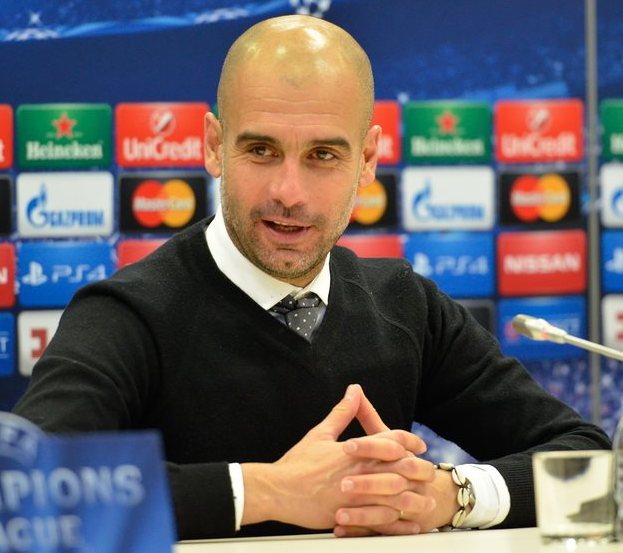The pursuit of perfection: From screamers to stats
I remember seeing a trend recently on social media reminiscing over the ‘Prime Barclays Era’. Clips of Ronaldo stepovers, of Cissé’s banana goal past a sprawling Čech, and of Henry’s rampaging runs – physical yet with a decided elegance – were popping up on my feed. The clips transport the viewer back to a time when football seemed simpler. They evoke this purity, one that feels lost in current football. The claim by fans that Pep Guardiola has ruined Jack Grealish, turning him from this free-flowing player at Aston Villa to a cog in Manchester City’s machine, is a manifestation of this lost feeling.
It is a trend that reminds me of an article on BBC Sport a year or so ago about ‘the slow death of the screamer’. It explores how football has changed in the modern period. The article showed, through statistics, that both the percentage of non-penalty goals from outside the box and the percentage of shots from outside have both dropped by about 10% since 2006; this trend is almost identical across all the top five leagues. The data also shows an almost identical reciprocal in the average number of passes per Premier League game. Football has evolved from the chaotic ingenuity of players to a game where each decision is made with precision-like efficiency.
Tactically, teams began to prioritise the creation of high xG chances and limit low xG shots from outside the box
The root of this evolution lies in baseball with Billy Beane and the story of the Oakland A’s. In the early 2000s, the Oakland A’s were a struggling baseball team unable to compete in the economic dominance that the major teams had created. Enter Beane and his team of statisticians, who revolutionised the draft, focusing on on-field percentages and statistics rather than the traditional five tools model used by scouts. Oakland A’s’ picks were met with initial scorn; they went against the grain, and people set in their ways were sceptical. It was not long, however, before the results began to bear fruit and caught the attention of Matthew Benham, owner of Brentford.
Brentford’s statistical-based model was inspired by Beane’s work in baseball. Brentford began looking at expected goals as a metric in signing players, viewing that as a more reliable metric than goals scored. Expected goals are the percentage chance a player has of scoring in a given position. The expected goals metric seeped into all arenas of football, from the way people signed players to how they set up their teams. Tactically, teams began to prioritise the creation of high xG chances and limit low xG shots from outside the box.
Football seems to be moving away from moments of brilliant spontaneity, instead focusing on systems. It is all about eliminating the risk, and this comes not just from where players shoot the ball from, but also in their decision-making. Players are more likely to pass the ball, find the safer option, and restart possession than they were 10 to 20 years ago.
It is important that through football clubs’ pursuit of perfection they do not lose sight of what made us all fall in love with the game
It seems as though fans tend to appreciate players who fit the mould of one with a riskier play style, more akin to this ‘prime Barclays era’. Take, for example, some of the criticisms that Bukayo Saka faces from fans: that his play is unoriginal and that he more often than not looks to pass it back. There is evidence to suggest this; Saka, when compared to his other wingers, ranks in the 36th percentile for progressive passes. This does not tell the full story, however. He ranks in the 96th percentile for assists per 90, his shot-creating actions stand in the 91st percentile, and he stands in the 75th percentile for successful take ons. So, despite making fewer progressive passes, he dominates the assists stats, suggesting that in terms of his forward play, he is ruthlessly efficient. The stat for successful dribbles proves a similar point.
Yet he still receives some criticism for his ‘negative’ play, as if fans believe a player can only be considered a top player if they run at their player or attempt that killer ball every single time. Bukayo Saka is an example of this new, more risk-averse, efficient player and is certainly a poster boy for this model of player.
Football is an art, whether it be the carefully engineered brushstrokes of Pep Guardiola – each one masterfully engineered with surgical precision – or the raw, yet equally skilled, chaotic genius of Rooney, Gerrard, and Ronaldinho. Football, however, is also ultimately a game which is based on results, and while the modern game may seem to have lost some of that freedom for players, the use of statistics has undoubtedly made teams a more effective outfit. The use of stats has irrevocably changed the game. It is important however that through football clubs’ pursuit of perfection, they do not lose sight of what made us all fall in love with the game: a ball at a child’s feet and the freedom of a world in front of them.

Comments